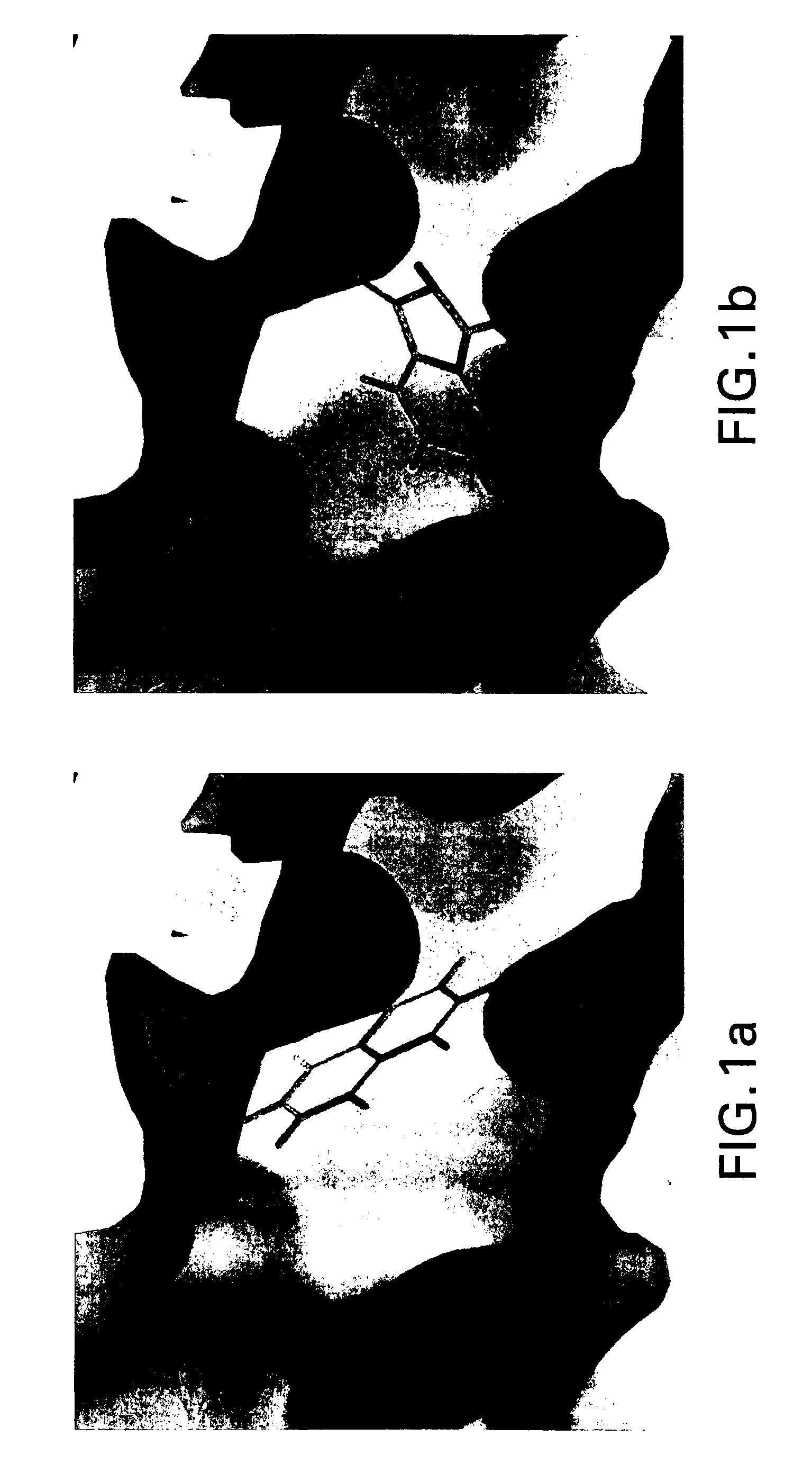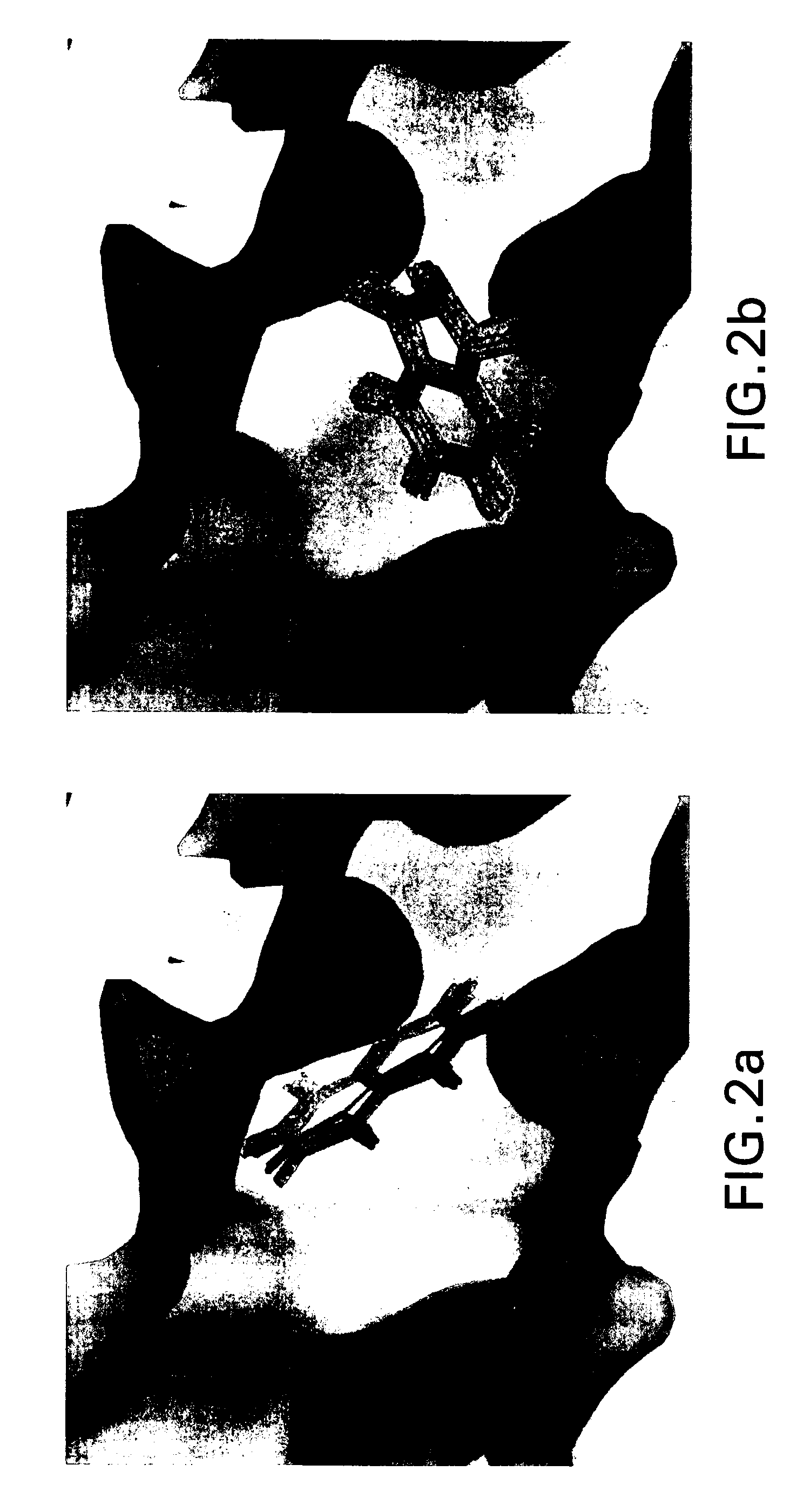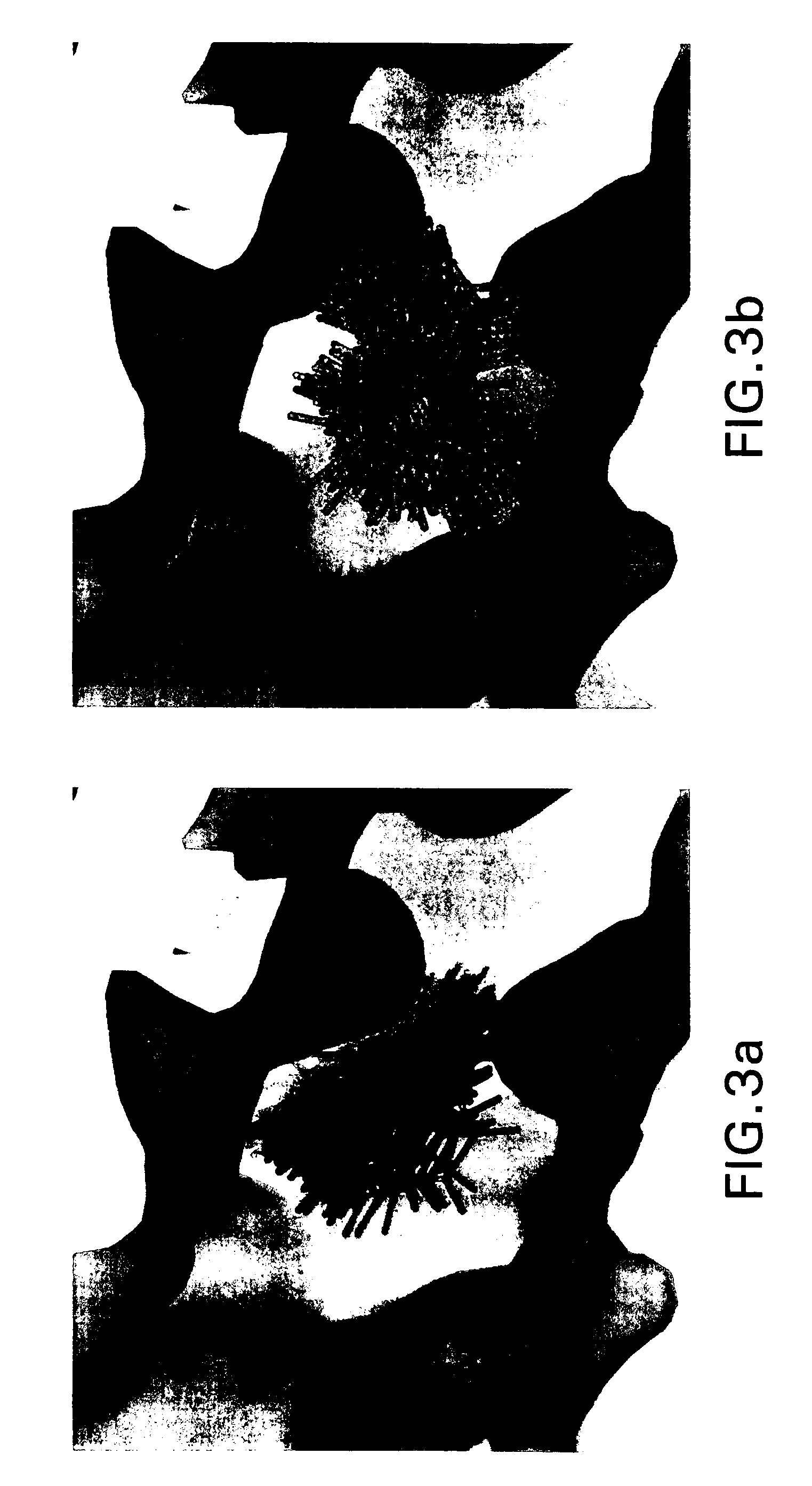Identification of ligands for macromolecules
a technology of macromolecules and ligands, applied in the field of identification of ligands for macromolecules, can solve the problems of difficult to decide which ones have the best chance, complex thermodynamics of binding, and the use of state-of-the-art computational methods requires very time-consuming computer simulations, so as to reduce the amount of data output
- Summary
- Abstract
- Description
- Claims
- Application Information
AI Technical Summary
Benefits of technology
Problems solved by technology
Method used
Image
Examples
Embodiment Construction
Definition of Terms
[0028] Clump
[0029] In embodiments, the present invention performs clumping to compress the raw data from a simulation between a macromolecule, such as a polypeptide or protein, and a group of molecular fragments. Clumping works as follows: if two or more fragments are close enough to each other in three dimensional space, and have similar orientations, they are put into a clump. Fragments within the clump are averaged, creating a representative fragment. In particular embodiments, the definition of a “close enough” distance is that the center of mass of each fragment is within about 0.1 and 0.5 Ångstroms from a preselected base fragment. In embodiments, fragments are put into a clump if the center of mass is within about 0.25 Ångstroms from a preselected base fragment. The definition of “similar orientations” is that the fragments are within about 0 to about 15 degrees in any direction from a base fragment. In other embodiments, the center of mass is within abo...
PUM
 Login to View More
Login to View More Abstract
Description
Claims
Application Information
 Login to View More
Login to View More - R&D
- Intellectual Property
- Life Sciences
- Materials
- Tech Scout
- Unparalleled Data Quality
- Higher Quality Content
- 60% Fewer Hallucinations
Browse by: Latest US Patents, China's latest patents, Technical Efficacy Thesaurus, Application Domain, Technology Topic, Popular Technical Reports.
© 2025 PatSnap. All rights reserved.Legal|Privacy policy|Modern Slavery Act Transparency Statement|Sitemap|About US| Contact US: help@patsnap.com



